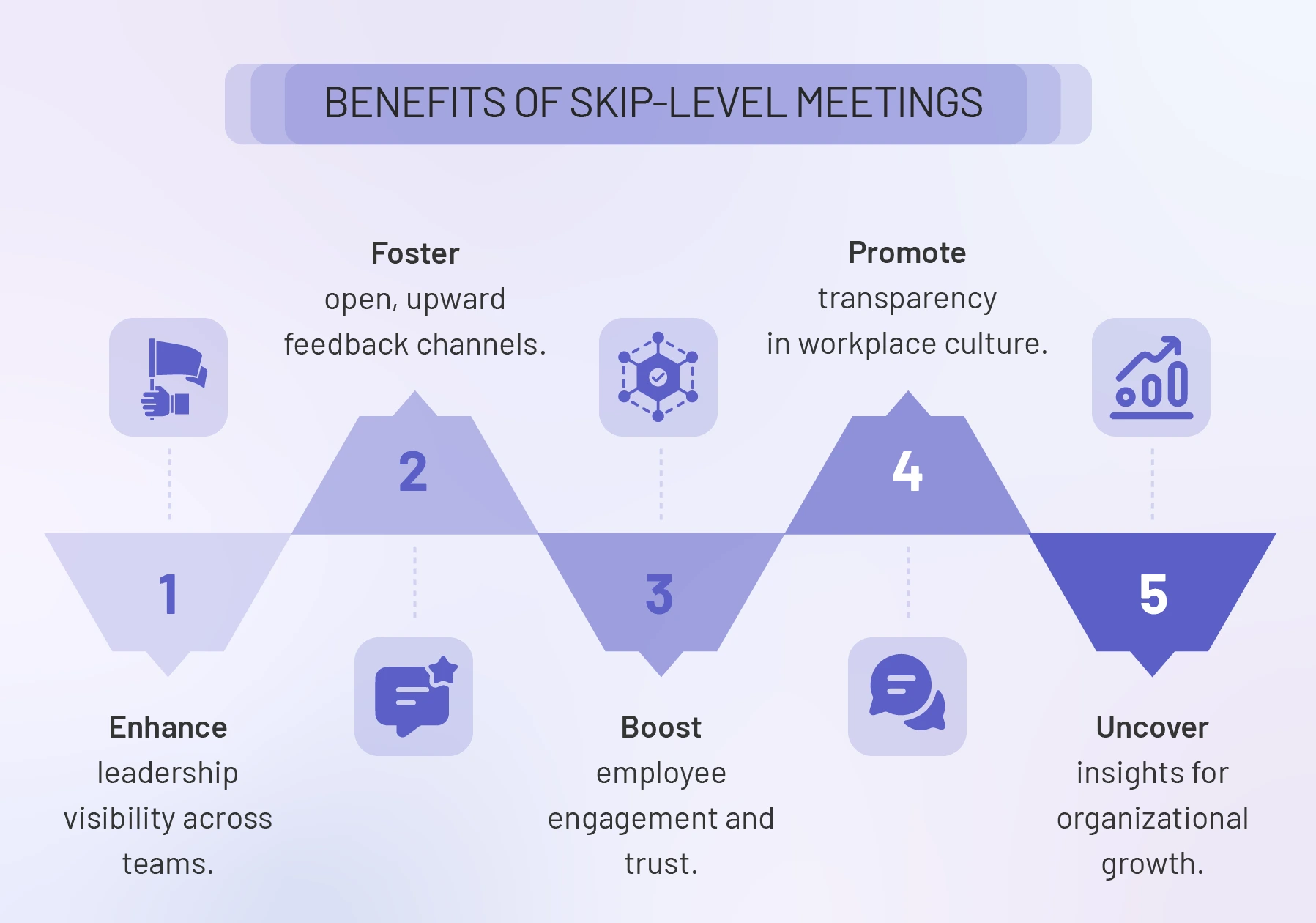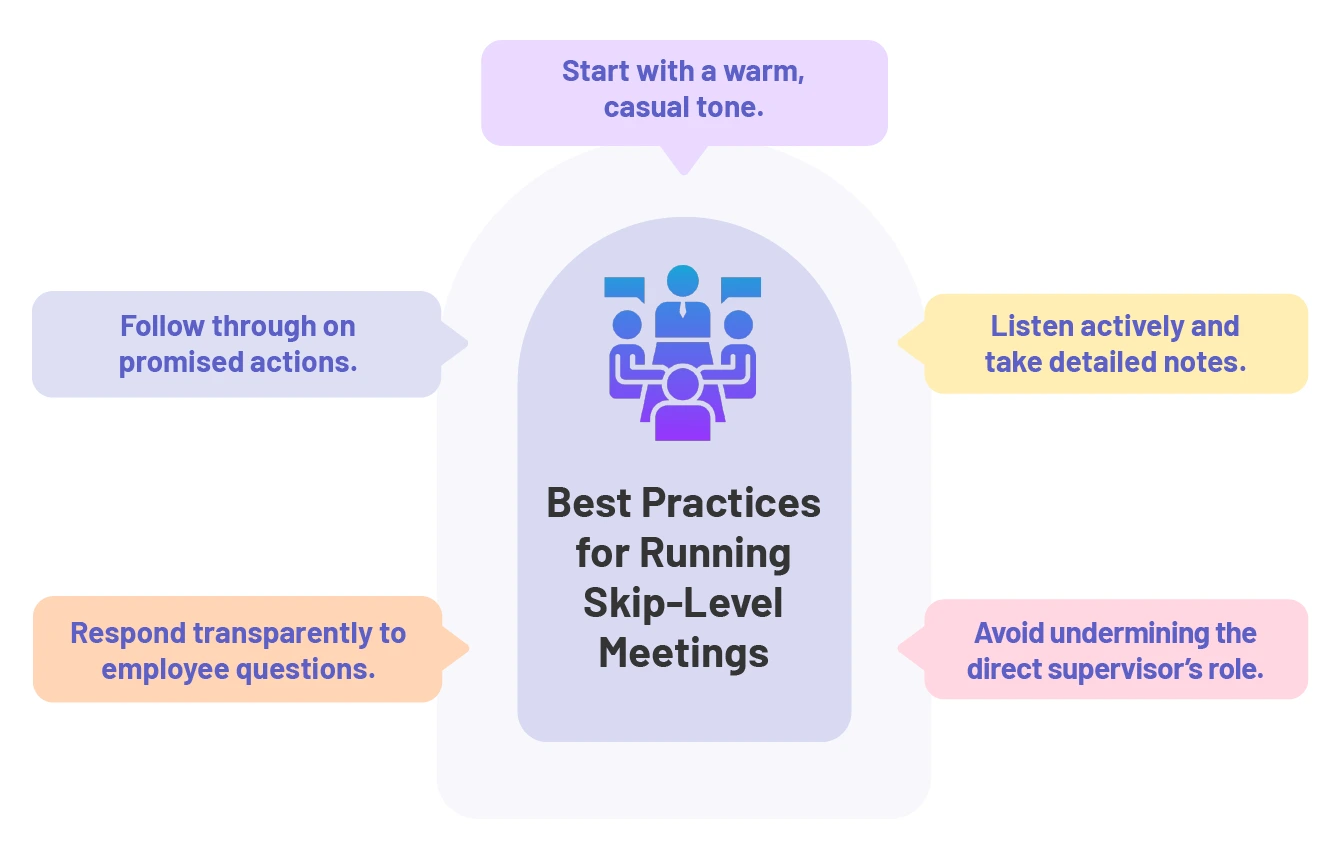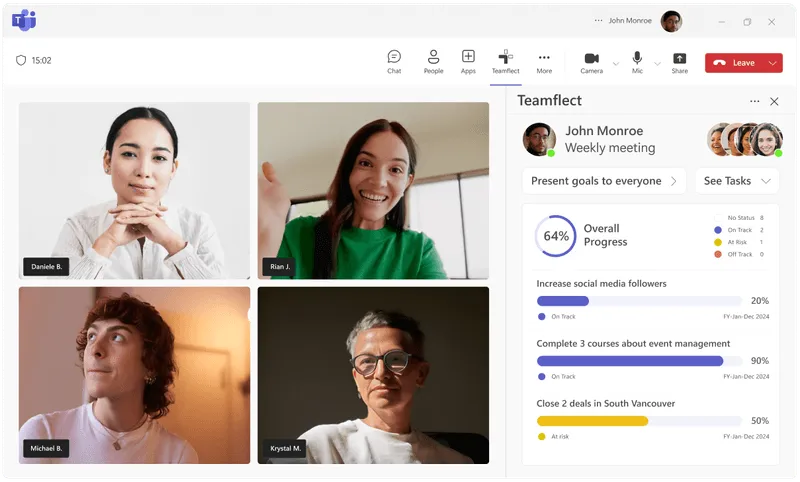In today’s evolving workplace, a skip-level meeting is a heavily used HR term/buzzword that actually has some merit. It’s a proactive way for leaders to connect directly with team members and build a culture of transparency. If you’ve ever wondered what a skip-level meeting is, how it works, or what kind of questions to ask, this complete guide breaks it all down.
A skip-level meeting is a one-on-one conversation between an employee and their manager's manager, skipping the immediate supervisor. This approach promotes direct communication, reduces hierarchy, and helps identify insights or issues that may otherwise go unnoticed.
Key characteristics of skip-level meetings include:
Skip-level meetings play a vital role in fostering:
Research found that employees who feel heard are 4.6x more likely to feel empowered to perform their best work. Skip-level meetings are one of the simplest ways to make that happen.
The conversation is usually informal, centered on trust, not a performance review. The goal is to create a safe space where employees can speak openly and feel heard by senior leadership. According to SHRM, well-executed skip-level meetings can improve morale, uncover hidden issues, and strengthen relationships across organizational tiers.

Fostering a transparent company culture is crucial for building trust, and skip-level meetings are a practical way to achieve this. So let's take a look the benefits of skip-level meetings for the different parties that attend them:
Benefits For Managers:
Benefits For Employees:

As Forbes notes, framing feedback with empathy and clarity strengthens working relationships and opens the door to real improvement. Need help preparing? Use these one-on-one meeting templates to structure your notes.

A successful skip-level meeting begins with a tone of openness and trust:
Tip: Start with light conversation to break the ice. Clarify that the meeting is a one-on-one meeting focused on direct communication, not performance evaluation.
Example: “Thanks for taking time to chat. This isn’t a review. I just want to hear how things are going from your perspective.”
These conversations are an opportunity to boost employee engagement and surface honest feedback.
Tip: Listen actively, take notes, and express gratitude for the employee’s input. This builds workplace transparency and encourages ongoing dialogue.
Example: “I really appreciate your honesty! This kind of feedback helps us make real improvements.”
Approaching skip level meetings with respect for existing leadership structures is key to maintaining trust.
Employees may ask skip level questions about leadership, processes, or team culture.
Tip: Be honest, even when you don’t have all the answers. Transparency builds credibility and supports a stronger communication culture.
Example: “That’s a great question. I want to give you the correct info, so let me check and get back to you.”
Requesting a skip-level meeting shows initiative and a desire to contribute to broader team success.
Tip: Keep the message polite and clear, focused on collaboration and problem-solving.
Example: “Hi [Manager's Name], I’d appreciate a few minutes of your time for a quick skip-level check-in. I’d love to share some ideas and hear your perspective.”

Leveraging technology can significantly enhance the effectiveness of skip-level meetings. Dedicated meeting software like Teamflect offers a range of features designed to streamline the process and improve outcomes, making it easier for managers and employees to connect meaningfully. As the highest-rated meeting software in the Microsoft Teams App Store, Teamflect lets you:
And so much more! Would you like to learn more about how you can elevate your meetings and keep all participants engaged? You can schedule a quick demo with a product expert to analyze your needs and see Teamflect’s powerful one-on-one tool in action.
And so much more! Would you like to learn more about how you can elevate your meetings and keep all participants engaged? You can schedule a quick demo with a product expert to analyze your needs and see Teamflect’s powerful one-on-one tool in action.
Addressing challenges like nervous employees or middle manager resistance is key to successful skip-level meetings. For nervous employees, reiterate that the goal is trust and support, not evaluation. When providing feedback to your manager, use these examples of constructive feedback to ensure clarity and impact. For middle manager resistance, maintain transparency with team leaders before and after meetings to align goals.
And so much more! Would you like to learn more about how you can elevate your meetings and keep all participants engaged? You can schedule a quick demo with a product expert to analyze your needs and see Teamflect’s powerful one-on-one tool in action.
When done consistently and authentically, skip-level meetings break down silos and provide real cross-functional insights that drives real results.
The beauty lies in their simplicity: regular, honest conversations that cost nothing but time yet deliver measurable impact on engagement and performance. Whether you're implementing them for the first time or refining your approach, remember that the goal isn't perfection but connection. Start small, stay consistent, and watch how these direct dialogues transform your team dynamics from the ground up.
An all-in-one performance management tool for Microsoft Teams
